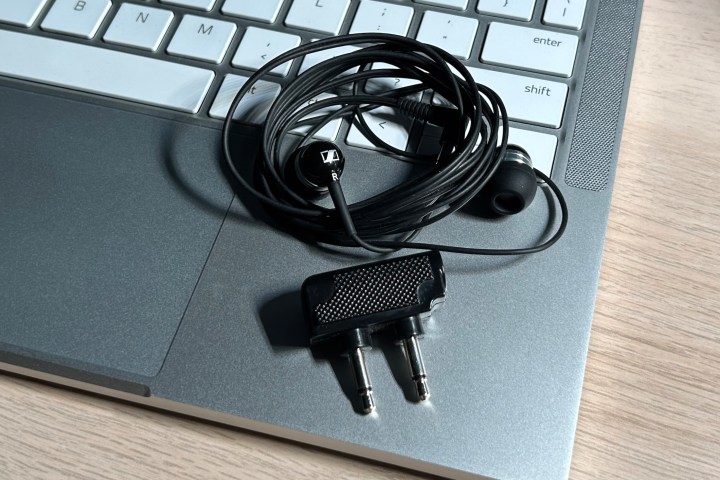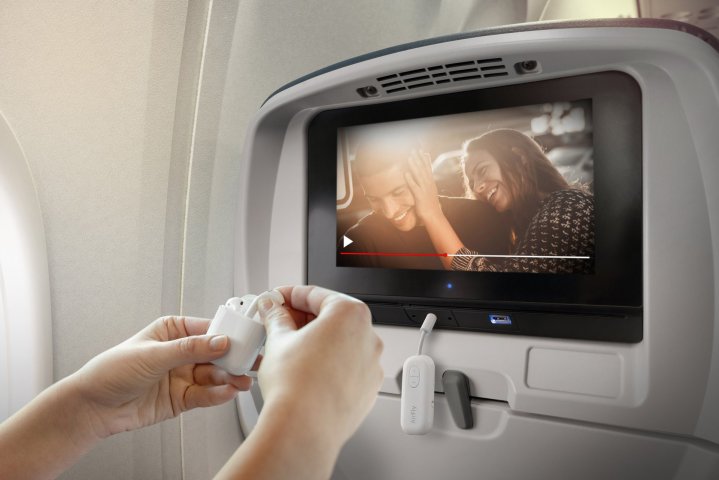United Airlines passengers are about to get a big upgrade to their in-flight entertainment (IFE) experience over the coming years thanks to its purchase of 300,000 IFE systems from Panasonic Avionics. The new seatback systems are wildly better than what we’ve been used to, sporting large and colorful 4K OLED screens, USB-C charging ports, spatial audio support — and a feature that seems almost old-fashioned by comparison: you can connect your Bluetooth wireless headphones.

United’s upgraded Boeing 787 and Airbus A321XLR aircraft won’t be its first planes with Bluetooth, but the fact that it’s a feature the airline felt was worth calling out is a stark reminder that Bluetooth — a wireless audio technology that has been around for about 25 years — remains a rarity on airplanes. This is despite the fact that the Federal Aviation Administration (FAA) got over its long-running fear of the tech in 2013 when it overturned its previous rules about portable device use and effectively gave airlines the green light on going blue.
So why — 10 years after receiving permission from the federal regulator — are so few airplanes equipped with Bluetooth for their in-flight entertainment systems? Why do we still need to bring analog cables or — gasp! — a two-pronged adapter, just in case?
After the FAA rule change, “there was still a concern that there was too much happening in such a small space on the limited 2.4 GHz frequency that in-flight Wi-Fi also operates over,” aviation industry analyst Jason Rabinowitz told Digital Trends. According to Rabinowitz, who specializes in in-flight entertainment, it took relatively recent advances in wireless tech to alleviate these problems.

The floodgates opened around 2021 when the first IFE companies like Panasonic Avionics began offering integrated Bluetooth in their systems. But the devices being available didn’t mean they would suddenly appear in airplanes. It was simply the first opportunity for manufacturers like Boeing and Airbus to offer the systems to their customers, or for airlines to begin retrofitting their existing fleets.
As you might expect, buying new planes or making major, cabin-wide changes to your current planes is an expensive proposition. Some airlines look at it as an opportunity to differentiate themselves from competitors — United clearly feels that having modern in-flight entertainment aboard some of its planes is the right move. But for others, it just adds cost. If you’re an airline that’s trying to compete on price, you may not have in-flight entertainment systems in your fleet at all.
As Rabinowitz points out, even after installing the system, there’s the upkeep like refreshing the IFE content — new movies, music, or games all cost licensing dollars and in-flight advertising can’t always cover those costs.
Delta Airlines, another major American carrier that has added Bluetooth to some of its planes, is clearly determined to approach its rollout of the feature slowly and sounded almost cautious. A spokesperson told us that “we are currently testing Bluetooth connectivity for first-class customers on all 30 of our active Airbus A321neo aircraft. The information we gather from our ongoing tests will be critical in ensuring we can deliver the best possible in-flight entertainment experience when we are ready to expand further.”
So for now, we’ll have to be a bit more patient as major airlines go about refreshing their fleets with new aircraft that have been outfitted with Bluetooth-capable systems. In the meantime, the existing workarounds for wireless headphones and earbuds still work.
A lot of Bluetooth headphones are still equipped with analog inputs and premium models like Sony WH-1000XM4 even ship with the increasingly archaic two-pronged airplane adapter, just in case.

Fans of wireless earbuds must contemplate different solutions. If you’re willing to spend the money, some high-end models have Bluetooth transmitters built into the charging cases — LG’s Tone Free T90Q and the Bowers & Wilkins Pi7 S2 are two recent examples.
Rabinowitz counts himself among the latter group. He flies exclusively with a set of Apple AirPods Pro. When an airline offers app-based in-flight entertainment options, he connects the earbuds to his iPad. When a seatback system is the only choice, he carries a plan B — the Twelve South AirFly Duo, a battery-powered $45 Bluetooth dongle that can connect to two sets of earbuds or headphones at once.
Bizarrely, there are some airlines that still completely prohibit the use of wireless headphones. Air Canada told Digital Trends that its main airline and its discount airline, Air Canada Rouge, allow Bluetooth headphone use on all aircraft. The company’s regional carrier, Air Canada Express, still bans the devices on its fleet of CRJ200 and Dash-8 400 aircraft.
Rabinowitz expressed deep skepticism at this policy, saying that not only does he not know what rationale Air Canada has for the decision, but that he doubts the rule is being enforced. Nonetheless, it’s better to be prepared; the FAA has been known to issue fines to passengers who disobey instructions from flight crews. And though it’s unlikely you’ll be fined for using your wireless headphones, an airline can still ban you from flying with them if it decides your behavior warrants it.
Editors’ Recommendations
Credit: Source link


Comments are closed.